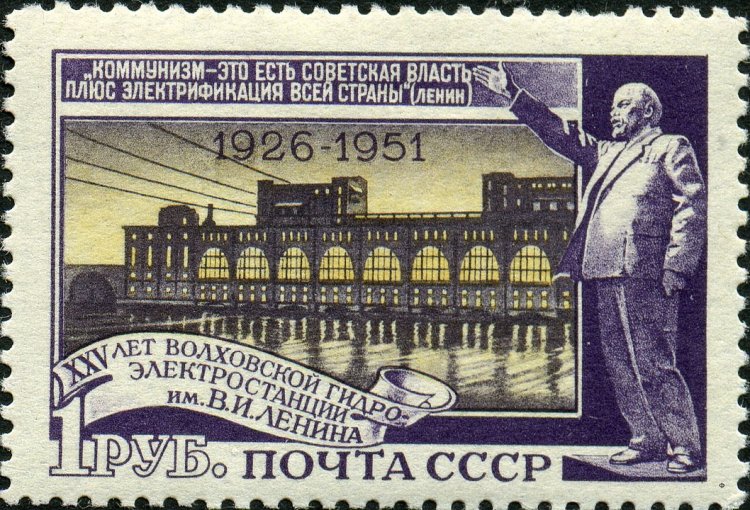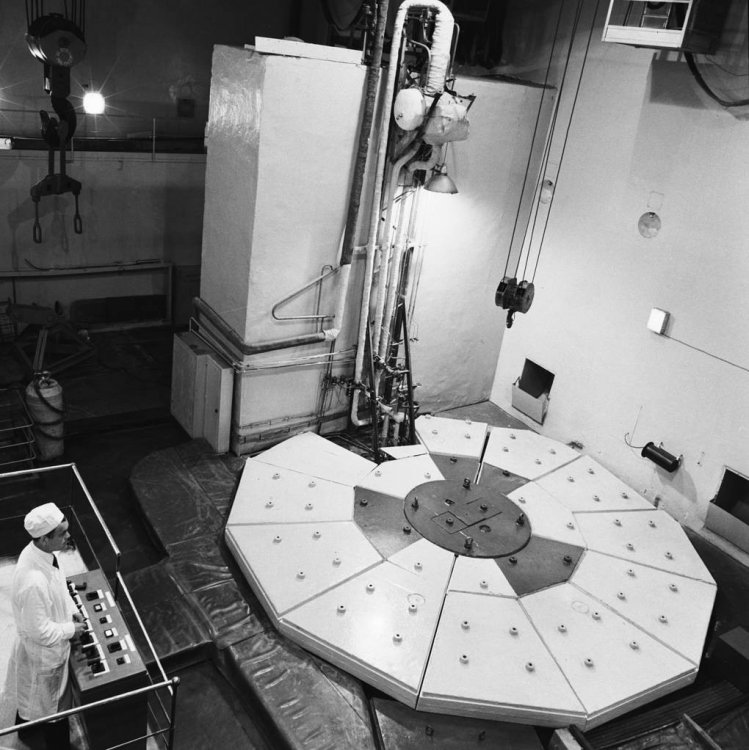Today we cannot imagine our lives without electricity. Wires have literally wrapped our planet and without energy flowing through the “veins” of technological progress, we cannot solve work tasks, learn the news on television, or launch a rocket into space. And in the 20th century – we would not be able to spread the ideas of communism in the new Soviet state...
Few people remember the State Commission for the Electrification of Russia (GOELRO), established by Vladimir Lenin in 1920. About 200 engineers led by Gleb Krzhizhanovsky developed a plan to electrify the country and build a network of power plants. The Kashirskaya, Nizhny Novgorod, Shaturskaya, and Chelyabinskaya district thermal power plants, Volkhovskaya, Dneprovskaya, two hydroelectric plants on the Svir River and other points on the GOELRO plan that emerged on the map, launched electric motors in factories, lit up the Soviet people's homes, changing their daily lives and worldview. Electricity was praised in stories, plays, children's tales, posters and movies, paintings and sculpture. The phrase of the proletariat leader flashed everywhere: “Communism is Soviet power plus the electrification of the whole country.”
USSR postage stamp, 1951: “Communism is Soviet power plus the electrification of the whole country” (Lenin). – “25th Anniversary of Volkhov Hydroelectric Power Plant named after Lenin (1926-1951).”
A century after the GOELRO plan was launched, the energy landscape is changing right before our eyes. The governments of the leading countries are aiming for an energy transition. It involves the use of renewable energy sources as well as the reduction of greenhouse gas emissions. Compared to new and conventional energy sources, nuclear power is a different story. After the accident at the Chernobyl nuclear power plant and later at the Fukushima plant, nuclear power has lost its credibility. Nevertheless, the share of electricity generated by nuclear power plants in Russia is about 19% of all electricity produced. This means that nuclear power plants supply electricity to every fifth light bulb in the country.
While in large cities electricity is easily accessible, in remote parts of our country residents receive it irregularly and sometimes do not receive it at all. But this problem is not confined to Russia. According to some estimates, about three billion people depend on outdated, non-environmentally friendly, and, most importantly, unsafe sources of electricity.
Understanding the importance of energy and the need to switch to clean energy sources, states are striving to use reliable and highly efficient generation with minimal CO2 emissions. The latter condition is fully achieved with nuclear power. According to estimates, in terms of the carbon footprint size, nuclear power plants are more environmentally friendly than both wind and solar generation. The carbon footprint of nuclear power plants is 9 grams of CO2 per kilowatt-hour, solar panels – 44 grams of CO2 per kilowatt-hour, wind generators – 11 grams of CO2 per kilowatt-hour. According to Alexei Likhachev, Director General of Rosatom State Corporation, nuclear power is not only a basic, long-term guaranteed source of stable power generation, but also one of the safest. “The green regulation that we are now launching in the country, the work that is going on at the international level, requires serious state participation. We analyzed the specific weight of CO2 emissions according to international methodologies. Nuclear power shares first place with wind power and is ahead of all other types of power generation. This is why we would like to promote nuclear power as a green energy source not only in Russia, but also in the whole world. We are not standing still, we work with the United Nations, we joined the UN Global Compact, and we are implementing our policy there. But we understand that we cannot do this alone, and in this sense, it is extremely important for us to promote nuclear power as environmentally friendly and green through international negotiations and bilateral and multilateral contacts.” As part of the “Breakthrough” Project, Rosatom seeks to increase the share of nuclear power generation to 25%, to make nuclear power “green” by closing the nuclear fuel cycle and minimizing radioactive waste. But how can the problem of electricity availability in remote communities be solved? By building small nuclear power plants!
Interest in low-power reactors grows every year. And it is not surprising, because in complicated natural conditions traditional energy sources cannot fully provide the population with heat and production – with the necessary amount of energy. In some cases, the cost of power transmission in complicated natural and climatic zones can be several times higher than the cost of its generation. This is why more and more attention is focused on the technologies that ensure the development of small nuclear power plants. Russia has already created unique new generation reactors that surpass the existing ones in terms of both efficiency and safety.
In general, the first nuclear power plants were based on low-power reactors. As early as in 1954, the first nuclear power plant with a capacity of 5 MW was put into operation in Obninsk. The success in mastering the peaceful atom made the country's leadership think about creating small and mobile power plants to operate in specific and hard-to-reach regions of the country, for example, in the North. Thus, in 1966, they began the construction of the first small nuclear power plant, the Bilibino nuclear thermal power plant in Chukotka. It is still functioning, but the power units are gradually being decommissioned. Part of the capacity has already been replaced by the energy generated at the brand-new floating nuclear power unit Akademik Lomonosov.
Control panel of a nuclear power plant
FNPU Akademik Lomonosov became the first floating nuclear power plant that showed its efficiency and reliability. In fact, the floating power unit is created entirely at the shipbuilding facility, which uses mastered technologies for building nuclear icebreakers. When the vessel is ready, specialists load the fuel and conduct the necessary tests. It only remains to sail to the place of operation, where the FNPU is connected to the power grid and begins to transmit heat and energy to the local population and industries.
In fact, the idea of floating power units is not new. For example, in the South Bay of Sevastopol, a heating vessel supplies steam to the ships of the Black Sea Fleet during the cold season and a floating station charges the batteries of submarines.
The world's first industrial floating nuclear power unit (FNPU) Akademik Lomonosov
Today Akademik Lomonosov operates on KLT-40S reactor units. The plant can operate for up to 3 years on one load of fuel. And the plant’s floating design makes it possible to reduce the volume and cost of construction to a minimum.
But Rosatom is not stopping there. Right now, they are developing an improved Optimized Floating Power Unit, which will be equipped with two new-generation RITM-200M reactor units. The total capacity of the two reactors will be 100 MW.
RITM-200 has already passed the Arctic ice test. Two reactors are installed on the Arktika icebreaker. In the future, the same reactors will be used on other nuclear icebreakers and low-power nuclear power plants, including ground-based ones. In the near future, a small land-based nuclear power plant will also appear in Yakutia. According to the data, the centralized power supply does not cover 64% of the territory inhabited by 15% of the population of Yakutia. This is a local energy zone, where 143 units of diesel power plants are located. And more than 11 billion rubles are spent for the power supply of these territories. The head of Yakutia noted in one of his speeches: “The symbiosis of industrial, social, territorial development of the Arctic and a reliable, environmentally friendly small nuclear power plant will be the first step toward overcoming energy hunger, at least in the Arctic zone of Yakutia.”
Needless to say, it is not easy to operate a new type of reactor unit. This is why the specialists will be assisted by the so-called digital twins. The scientists and engineers at VNIIAES have already begun developing digital twins for small nuclear power plants with the RITM-200N and Shelf-M reactors. The digital twin will work out design and engineering solutions before they are implemented “in metal,” check equipment compatibility, train personnel, and help plant employees ensure safety.
Plans for the development of small nuclear power are related directly to its benefits. For example, SNPPs will stabilize heat and electricity tariffs at a socially acceptable level, reduce the environmental load, and provide heat for agricultural facilities for growing products in protected areas. Moreover, the plants can desalinate seawater in coastal regions.
Our energy needs are growing rapidly, which means that mankind will need even more different sources of energy generation and preservation. Of course, there is no universal solution, but among the variety of energy generation forms we use, small nuclear power plants are sure to take their rightful place.
Photo on the main page: Rosenergoatom
Sources:
1. Mikhail Mishustin meets with Alexei Likhachev, Director General of the Rosatom State Corporation / Portal of the Russian Government
2. The world's first floating nuclear power plant goes to Chukotka / Vedomosti
3. Aisen Nikolayev: Small nuclear power will speed up Arctic development / Official Information Portal of the Republic of Sakha (Yakutia)
4. Small/medium capacity nuclear power plants and floating nuclear thermal power plants / Joint-Stock Company Afrikantov Experimental Mechanical Engineering Design Bureau (OKBM)
5. Design Findings Bureau: Top6 developments of OKBM / Country Rosatom
6. The world's first floating nuclear power plant started operating in Russia / Vedomosti
7. Our people in Chukotka: the project on building the first floating nuclear power plant has been completed / Nizhny Novgorod Association of Industrialists and Entrepreneurs
8. The world's first nuclear power plant in Obninsk becomes a monument-museum / TASS
9. Small source of big energy / TASS
Photo on the page: Arrival of the "Akademik Lomonosov" shipyard in Pevek. Photo: Alexey Bashkirov/Rosatom Country
























